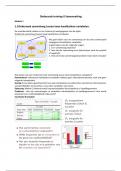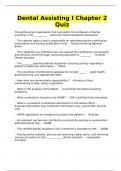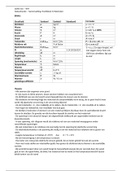Governance: the concept
What does governance mean?
-minimal state: ideological preference for less government
-corporate governance : 'the system by which organizations are directed and controlled'
-'good governance': systemic, political and administrative
-socio-cybernetic systems: no longer a single sovereign authority
-->Rhodes (1996, 2007): self organizing networks
Characteristics of governance
* Interdependence: Interdependence between organizations
* continuous interactions: exchange resources and (re)negotiate shared purposes
* game like interactions: rooted in trust and regulated by rules of the game negotiated and
agreed by network participants
* autonomy from the state: the state can only can indirectly and imperfectly steer networks.
Governance the concepts
-->toolkit of government: how to manage inter-related networks of organizations pursuing
the achievement of a societal goal?
-->Managers as facilitators
-->Mutual adjustment
Central Question
* What kind of consequences have the shifts in governance upon the organization of tasks
and upon authority?
* Aka: a)how are decisions taken in a governance
setting, and
* b)who is responsible?
Governance... and then?
* Governance= coordination of institutions and agency in given policy area towards
(achieving) collective objectives
--> division of control and patterns of interactions among key types of actors active in that
specific policy area
--> new public governance
slide table 3.1 elements of new public governance, in contrast with public administration
and new public management
Improved public service?
Mixed results:
* Reforms take time (to implement and show outcomes)
* Symbolic vs substantial reasons
* Unexpected (events and consequences)
, Dimensions
--> Changing relationships - coping with uncertainty: multiple and conflicting systems
interacting at any given time
BUT: have societal-government relationships ever been very stable?
-->Value and values: are needed to navigate hybridity
-Bozeman (2007): values are subjectively held principles of individuals or groups
-values need to be made explicit --> consequences for measuring and comparing them
Dimensions (2)
-->Workforce competency and capacity
- Consequences for: education; professional preparation; recruitment and development
- Content, application, and relational capacity
Performance in the public sector
Layered analysis
Macro - Micro - Macro
1. Institutions, culture, regulations which affect management practices
2. Management practices affect outcomes ("success")
3. Outcomes affect legitimacy ("are the results accepted by the public/society")
What does governance mean?
-minimal state: ideological preference for less government
-corporate governance : 'the system by which organizations are directed and controlled'
-'good governance': systemic, political and administrative
-socio-cybernetic systems: no longer a single sovereign authority
-->Rhodes (1996, 2007): self organizing networks
Characteristics of governance
* Interdependence: Interdependence between organizations
* continuous interactions: exchange resources and (re)negotiate shared purposes
* game like interactions: rooted in trust and regulated by rules of the game negotiated and
agreed by network participants
* autonomy from the state: the state can only can indirectly and imperfectly steer networks.
Governance the concepts
-->toolkit of government: how to manage inter-related networks of organizations pursuing
the achievement of a societal goal?
-->Managers as facilitators
-->Mutual adjustment
Central Question
* What kind of consequences have the shifts in governance upon the organization of tasks
and upon authority?
* Aka: a)how are decisions taken in a governance
setting, and
* b)who is responsible?
Governance... and then?
* Governance= coordination of institutions and agency in given policy area towards
(achieving) collective objectives
--> division of control and patterns of interactions among key types of actors active in that
specific policy area
--> new public governance
slide table 3.1 elements of new public governance, in contrast with public administration
and new public management
Improved public service?
Mixed results:
* Reforms take time (to implement and show outcomes)
* Symbolic vs substantial reasons
* Unexpected (events and consequences)
, Dimensions
--> Changing relationships - coping with uncertainty: multiple and conflicting systems
interacting at any given time
BUT: have societal-government relationships ever been very stable?
-->Value and values: are needed to navigate hybridity
-Bozeman (2007): values are subjectively held principles of individuals or groups
-values need to be made explicit --> consequences for measuring and comparing them
Dimensions (2)
-->Workforce competency and capacity
- Consequences for: education; professional preparation; recruitment and development
- Content, application, and relational capacity
Performance in the public sector
Layered analysis
Macro - Micro - Macro
1. Institutions, culture, regulations which affect management practices
2. Management practices affect outcomes ("success")
3. Outcomes affect legitimacy ("are the results accepted by the public/society")










